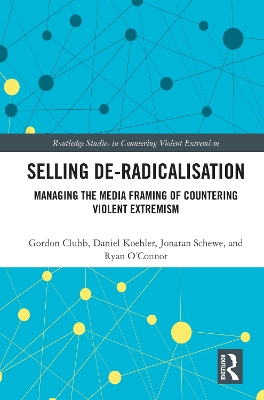Routledge Studies in Countering Violent Extremism
2 total works
Collective Jihadist (De-)Radicalization
by Scott Nicholas Romaniuk, Eugenio Dacrema, and Daniel Koehler
This book provides a homogeneous theoretical framework on radicalization and de-radicalization based on previous literature and several new original elements that are the product of the research of the three authors; this framework is then applied to three different historical scenarios.
The aim of the book is to provide a complete and comprehensive framework to understand the phenomenon of jihadist radicalization and deradicalization. It is based on a wide selection of multidisciplinary literatures which have treated the topic from different perspectives in order to depict a picture as complete as possible. Such a multidisciplinary approach is enriched by original elements derived from the authors’ work and empirical research. This theoretical framework is applied to three different case-studies: the case of Hamas in Palestine, the case of the Islamic Group in Egypt and the cases of Ennahdha and Ansar al-Sharia in Tunisia. All these groups showed rather different paths of radicalization and only two of them deradicalized. Through the analysis of their historical paths, the authors elicit the common mechanisms and dynamics that, according to the different contexts, led them to different or similar developments.
This book will be of much interest to students of deradicalisation, counter-terrorism, Middle Eastern studies and International Relations.
Selling De-Radicalisation
by Gordon Clubb, Daniel Koehler, Jonatan Schewe, and Ryan O'Connor
This book examines how de-radicalisation programmes have been portrayed in the media and details the role of public relations (PR) strategies employed by such programmes and Countering Violent Extremism (CVE) to create positive coverage of their work.
CVE and de-radicalisation programmes have seen a significant rise in recent years and are now cornerstones of many countries’ counterterrorism strategies. Despite the increased importance of these tools to counter violent radicalisation leading to terrorism, they remain controversial and sometimes receive fierce public criticism and opposition. This work looks at how CVE and de-radicalisation programs are able to influence a country’s discourse on de-radicalisation, and how far governmental programs differ from non-governmental initiatives in terms of their PR strategies. The book also provides a theoretical basis of how the discourse on CVE is constructed in the media. As major case studies, this book examines the United Kingdom, Germany and Nigeria. For these countries, the authors have gathered and assessed roughly 3,000 newspaper articles on de-radicalisation programmes over a decade to provide an empirical base.
This book will be of much interest to students of countering violent extremism, de-radicalisation, and terrorism studies.

